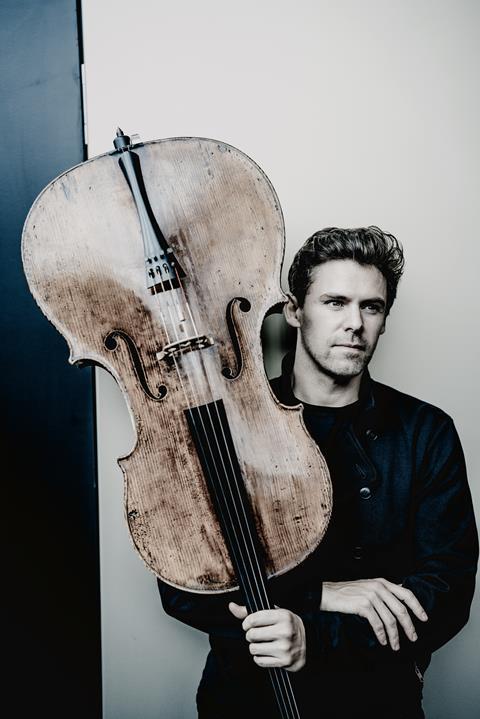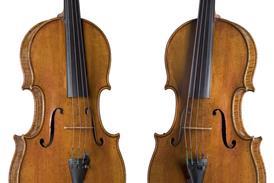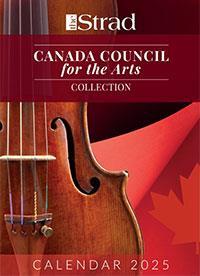The cellist speaks to The Strad about his new album which musically encapsulates the language of love, from music by Robert and Clara Schumann, to music of the present day

Discover more Featured Stories like this in The Strad Playing Hub
The Schumann Concerto is a staple piece in cello repertoire. When did you first encounter it, and what is it about the work that you love, leading you to record it?
I first encountered Schumann’s Cello Concerto as a young boy through legends such as Casals and Feuermann, and I was captivated by its emotional depth and lyrical beauty. It became an essential at the time I met and work with Steven Isserlis. This concerto has since become my favourite, not only for its exquisite melodies but also for the profound story it tells.
It’s unlike any other concerto for any instrument; it’s such a magical masterpiece, with a non-stop linked structure where every note is perfect. Schumann’s writing feels like a conversation, full of tenderness and passion, reflecting his deep love for Clara. Each movement unfolds like a chapter in their story. I am still drawn to the way the cello sings, expressing what words cannot. It is probably why this concerto is one of the most challenging of the repertoire, technically and musically. It is built as a chamber music piece together with a symphonic orchestra, which is exciting to play, amazingly done with its dialogue and very emotional for the listener.
It’s one of the closest pieces to my heart! This led me to record it, after many years of reflection and introspection. If I were to do it, it had to be linked to its context, its story, in a slightly different perspective and pairing; seen in my project Love Letters.
Schumann’s writing feels like a conversation, full of tenderness and passion, reflecting his deep love for Clara
In your new album Love Letters, you’ve combined the concerto with pieces by Clara and Robert Schumann. Musically speaking, how is the ‘language of love’ evident in these pieces?
To me, the concerto is Robert’s last love letter to his wife. It’s a late work where the music captures the essence of their relationship - joyful, yet tinged with longing. The lush harmonies and intricate interplay evoke a range of emotions, from exuberance to melancholy.
The first movement is a real journey of the soul, opening with a love song, travelling to dark regions in the central section, and then returning to love and tenderness. The slow movement is a glimpse of paradise through his love for her, while the last movement is an outpouring of joy, a real declaration of love with many quotes of Clara’s name through the famous descending fifth. It feels to me that he is telling us his passion to Clara, calling for her through this interval in the final, ’CLARA, CLARA!’
The other pieces are linked through the life of the two lovers Clara and Robert, and we can follow their state of mind through their correspondences. For instance, Robert offered Clara his Twenty-Six Songs ’Myrthen’ op.25 a liederkreis, or song cycle, which opens with ‘Widmung’ (Rückert), a stirring dedication full of symbols of their love, and also in the love-key of A-flat major, a tonality revisited in ’Du bist wie eine Blume’ (’You are like a flower’), which is set to words by his beloved Heinrich Heine. No less an admirer of Heine, the young bride’s response the following Christmas was the poignant ’Ich stand in dunklen Träumen’ (’I remain in these sombre dreams’).
Christian-Pierre La Marca performs Robert Schumann’s Fantasiestücke op.73 - with the assistance of a VR headset! Watch the video here:
You’ve also included contemporary compositions on the theme of love letters. How has each composer has approached this theme?
Love Letters does not only revisit the past, but equally seeks to root these messages within a contemporary context. In an age when dating is ruled by apps and algorithms, eminent composers bring their own visions of love, imbued with the culture of immediacy, of digital connection.
Fabien Waksman wrote his piece on Artificial Intelligence - Replika AI actually allow users to build a relationship with a personalised chatbot based on the principle of machine learning. He tells the story in music of Rosanna Ramos, a woman aged 36 and living in the Bronx, who marries Eren, a virtual mate, created entirely from an app called Replika.
Désenvoyé by Michelle Ross is framed with allusions to Schumann’s ‘innere Stimme’ marking, found in his Humoreske. Schumann’s marking inspired her to think of the surface of music, and how music weaves between our inner and outer worlds. The piece lives in the world of désenvoyé (’unsent’), where many of our deepest longings remain like ’innere Stimme.’
In Vibrating by Jean-Frédéric Neuburger, cello and piano expand upon a continuous melodic line. The reference points of the discourse gradually change, from B-flat to C, passing through various changing harmonic colours, illuminated by the cello’s subtle variations of vibrato, always bowed rather than plucked, reflecting the spontaneity and lovely expressive possibilities of the human voice.
For Patricia Kopatchinskaja, abbreviated digital communication has replaced poetic handwriting in our time. And yet a single message of any kind can change people’s lives and touch their hearts to the core. Love remains an enigma, like music. That’s how this led to a solo piece called SMS. She also worked with her poems like Klingelnseel to transfigure words into music.
Love Letters is out on naïve on 25 October 2024. Christian-Pierre La Marca will perform works from Love Letters on 16 November 2024 at the Brussels Cello Festival.
Read: ‘On a cello, you can do big things’ - Christian-Pierre La Marca
Read: Violinist Patricia Kopatchinskaja on the shadow world of Shostakovich
Discover more Featured Stories like this in The Strad Playing Hub
The number one source for playing and teaching books, guides, CDs, calendars and back issues of the magazine.
In The Best of Technique you’ll discover the top playing tips of the world’s leading string players and teachers. It’s packed full of exercises for students, plus examples from the standard repertoire to show you how to integrate the technique into your playing.
The Strad’s Masterclass series brings together the finest string players with some of the greatest string works ever written. Always one of our most popular sections, Masterclass has been an invaluable aid to aspiring soloists, chamber musicians and string teachers since the 1990s.
The Canada Council of the Arts’ Musical Instrument Bank is 40 years old in 2025. This year’s calendar celebrates some its treasures, including four instruments by Antonio Stradivari and priceless works by Montagnana, Gagliano, Pressenda and David Tecchler.





































No comments yet